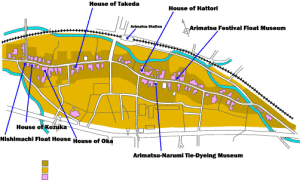City Planning
A big fire broke out, however, in 1784, and burned most of the town.
Learning a lesson from the tragedy, this time they built houses of plaster wall sand tile roofs. Some parts of those buildings still remain and create the atmosphere of good old days. Among those buildings, the Hattori Residence is designated by Aichi Prefecture, and the Oka, Kozuka, and Takeda Residences are designated by Nagoya Municipal as 'Cultural Treasures'.
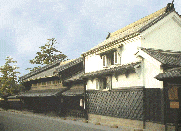
House of Hattori
'Cultural Treasure' designated by Aichi Prefecture.
'Important Building in the Cityscape'
Built in late Edo Period. On the huge site stand a main house, a well house, a guest house, a gate, a row house and six storehouses. The buildings show the techniques and know-hows of fire-proof, one of the biggest landmarks ofArimatsu.
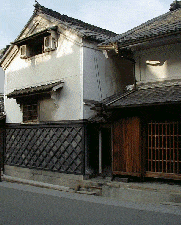
Warehouse of Hattori
'Cultural Treasure' designated by Aichi Prefecture.
'Important Building in the Cityscape'
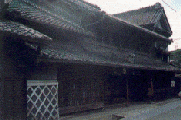
House of Takeda
'Cultural Treasure' designated by Nagoya Municipal
'Important Building in the Cityscape'
This house is typical to a merchant house, and is one of the landmarks along Tokaido street. The site contains a main house, three storehouses, tea house, 'shoinzukuri' residence. Walls on the second floor are made of black plaster, and under the roof hangs gas lights of Meiji Era. Prosperity of those days lingers on.
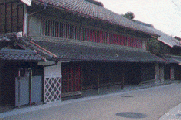
House of Oka
'Cultural Treasure' designated by Nagoya Municipal
'Important Building in the Cityscape'
This massive building was built in late Edo Period and is the biggest residence in Arimatsu. A main house, a workshop, and two storehouses constitute the site. The plaster walls on the second floor are decorated with wave pattern.
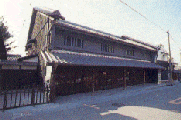
House of Kozuka
'Cultural Treasure' designated by Nagoya Municipal
'Important Building in the Cityscape'
This beautiful, well-balanced residence was built after the big fire in 1784. Consists of a main house, two storehouses, and a tea house.
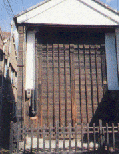
Nishimachi Float House
'Important Building in the Cityscape'
Built in 1873, the building houses Jingu-Kogo-Sha Float.
